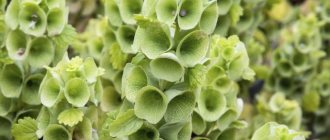Description and features
What's the first thing that changes when spring comes? Of course, it's getting warm, but we're not talking about the weather now. Everyone wants bright colors. After all, greenery and bright buds have not pleased us with their appearance for at least six months.
Gardeners are starting to revive their garden after winter hibernation. But in order for it to bloom, you will have to wait another month. However, there are some plants that can be called “early birds.” Among them is sparaxis . This small flower will fill the garden with bright color even before summer arrives.
The buds bloom already in the spring months. True, not all climatic conditions are appropriate here. Initially, such garden decoration could only be found on the African continent. These “flower beds” went along the rivers. The stems can be called tall, because they reach a hundred centimeters in height. But, this is only in Africa, or where the climate is similar.
Now the plants have taken root in our country. Only they gained the greatest popularity among residents of the south. This is understandable; in the north, a flower either will not survive at all, or will force its owner to sweat a lot in order to maintain the appearance of a “pet”. You are unlikely to be able to grow meter tall plants, but half a meter high is fine.
Traditionally, corms are very popular, because they can be called perennials. This very bulb will produce a “harvest” year after year. sparaxis flower also belongs to this group . It is also related to the iris family.
In appearance it is an inflorescence of small petals, each of which is two-colored. Moreover, these colors are contrasting, which only adds to the beauty. It can be all shades of sunny yellow, scarlet, purple, or white.
Together they form either a completely flat circle, or slightly raised and resemble a funnel. If measured, the diameter reaches five centimeters. In the center of this entire composition is a pestle. It is kept company by stamens, of which there are three.
The leaves are similar to sedge, they are oblong with pointed ends. Together with unusual pointed leaves, this creates an original composition. She will get along quite well with the other “residents” of your garden. To prevent these bright “stars” from getting lost in the ensemble, keep in mind that it is better to plant them in the foreground.
It is better not to limit yourself to one flower, but to collect about a hundred stems in one place at once. Then the desired effect of a bright and exotic garden will definitely be achieved. Such a garden dweller will look great in a hanging flower pot. Florists also fell in love with this African representative. Cut specimens show their positive side in bouquets; they last a long time.
Pests: ways to combat them
Sparaxis is affected by pests such as mealybugs, aphids, spider mites and thrips. Pest infestation most often occurs from neighboring infected crops.
- Spider mites feed on the undersides of leaves and damage leaves, causing them to turn yellow and dry out. A web forms on the back of the leaves. Control methods: treating the plant with a combined liquid of 0.1% karbofos and 0.3% ethersulfonate. This composition simultaneously destroys ticks and their eggs.
- The brown bug settles on shoots and leaves and feeds on plant sap. Control methods: get rid of the pest by treating the leaves of the plant with a cotton swab dipped in alcohol, or by treating with insecticides: “Fitoferm”, “Decis”, “Aktellik”, “Inta-vir”.
- Thrips are pests that primarily attack leaves. Light small spots form on the leaves. Over time, the affected leaves become shiny and wilt. Pests settle on the bottom of the plate. Control methods: remove the affected leaves and treat with insecticides - “Decis”, “Aktellik”.
- Aphids - colonies of small insects infect the stems and leaves of a plant, sucking out cell sap. Leaves and shoots become deformed and dry out. Control methods: treating the plant with a soap solution or special products containing permethrin. Such drugs include the drugs “Antitlin”, “Biotlin”.
Aphid
Types and varieties
Not much, not little - six different species of this plant are known to the scientific world. And there are even more varieties - as many as twenty. But not all of them are able to withstand the weather conditions in our country. Therefore, now about those who successfully cope with this task:
- Tricolor, or sparaxis tricolor
This is a rather tall plant species. The stems can grow up to 40-50 centimeters. If we talk about color, then such buds are either snow-white, or red, yellowish, or different shades of purple.
The main distinguishing feature is that a third one is added to the standard set of two colors. Those. the middle of the flower, for example, is yellow, it is surrounded by a dark border, for example, brown, and after that comes the main color, it can be scarlet. This type includes varieties such as:
- Lord of Fire. Everything here is very clear from the name, because this bud looks like a flame. The core is surrounded by a pitch-black ring that fades into fiery red petals.
- Striped. If you look at this sparaxis in the photo , you can understand that it is similar to the previous variety. But the main color here is red.
- Grandiflora. One of the longest stems is its distinguishing feature. You can also distinguish the variety by its pronounced aroma.
- Low growing mixture. These, on the contrary, are very short, only fifteen centimeters in height is their limit. The color scheme can be completely different.
- Elegant. Its fiery color and even more modest size (can be only ten centimeters in length) sets it apart from other varieties.
- Bilbifera. White predominates in their palette. The petals are arranged in a funnel and sit on a fairly high stem. Many believe that this is the tallest variety. But no matter what soil suits him, he prefers sandy flooring.
- Another popular species is sparaxis superba .
Don't expect these to be tall bushes. No, a maximum of three tens of centimeters in height. The star flowers themselves are small, standard size. Five pieces may well constitute one inflorescence. The circle in the middle of the composition can be sunny in color, or it can be black. It is complemented by shades of lilac, orange and snow-white.
Sparaxis (video)
The handsome South African Sparaxis appeared on our summer cottages not long ago. It is extremely diverse, with its participation you can create an endless variety of garden compositions. It loves sunny, warm places, but can hardly tolerate heat, requiring regular watering. Cold is generally not acceptable for it, as it can interfere with flowering. Surrounded by caring and competent care, sparaxis pleases with snow-white, bright red, purple, yellow, orange and other beautiful colors, where tenderness is harmoniously combined with contrast.
When and how to plant
Those who have already dealt with gladioli will find many similarities between these representatives of the flora. Considering what features the hero of this article has, planting sparaxis is most easily done using bulbs. You can buy them, or get them yourself.
To do this, when the time of autumn comes and flowering comes to an end, the bulb is dug up. By that time it had already been divided into several fragments. They are very carefully separated from each other. Here are the preparations for the future garden.
Initially, you need to let them dry. This will take five days. So that they retain their vitality, they cannot be left anywhere. Since these “embryos” will have to wait in the wings until spring, it is necessary to create suitable conditions for them.
Firstly, temperature. It should not be hot - maximum +10. But it’s not cold either, so look for suitable places in the house, it could be the cellar. Secondly, take care of the constant flow of fresh air into the room, ventilate it.
And finally, you can’t just lay them out on the floor; you need some kind of substrate. Sawdust is quite suitable for these purposes. If you did everything correctly, you don’t have to worry, the planting material will retain its properties for up to three years.
When spring is around the corner, the sparaxis bulbs must survive the move. To begin with, bring them to where it is warmer, and significantly. Average room temperature in a living space is fine. The tubers should spend a couple of weeks in the new place.
Afterwards, you need to decide where you will plant - in a pot, or directly outside. But in any case, you need the right mixture for this. The set of components will be as follows: loam plus sand (the ratio should be 50/50), plus some kind of organic fertilizer.
Compost can serve as the latter; humus will also work. In addition, a prerequisite is a drainage layer. Make sure it is at least five centimeters thick.
Both expanded clay and ordinary gravel will work here. The hole should be small, only ten centimeters deep, but the distance between the planted tubers needs to be twice as large.
If we talk about when to plant sparaxis, then you also need to remember that this flower is heat-loving, therefore, if you do not live in the warmest latitudes of our country, do it in March.
Then at the height of summer you will be pleased with the bright inflorescences. If the climate in your region is mild, you can plant in the fall. Then, already in May you can count on flower beds pleasing to the eye. And by mid-summer such buds will fade. The main thing to remember here is that if the temperature drops below zero, the matter is lost, the tubers will die.
When you want, you can resort to another way to acquire such beauty in your garden - buy seeds. But get ready, it won't be that simple. If you at least allow the temperature to drop, you can say goodbye to this idea.
To begin, take a box or a special flowerpot. The container must be filled with suitable soil. The seeds do not need to be deepened too much; a centimeter will be enough; you can lower them into the ground to a shallower depth.
Next, you need to wrap all this equipment in film and leave it alone for a while, but only where it is warm. Do not forget about moisture, it must be supplied in sufficient quantity. Have you noticed the first shoots? – take care of thinning immediately.
Provide a distance of two centimeters between plants. The next step is to wait until the seedlings reach a height of eight centimeters. Watering and sunlight should be provided at this time. When the plants reach the desired size, you can move them to their permanent location. But remember that after transplantation, no frost.
These flowers look best in a group. Therefore, you should not scatter plants individually throughout the garden. Arrange a whole “island” of colorful inflorescences. If we are talking about very long varieties, then take a reserve of 10 centimeters when planting; you should not plant them closer.
If you like plants that are not so tall, then four centimeters will be enough. But there should be no trees nearby that will create shadow, because your flowers need more warmth and light.
Reproduction
There are two ways to propagate the plant: by bulbs and seeds. Let's look at each of them.
Bulbs
In autumn, when the flowering period ends, the bulbs grow well and can be divided. It is necessary to dig them out carefully so as not to damage the roots. They should be stored indoors, with an air temperature of at least +9 °C.
In order to preserve the viability of the bulbs, it is recommended to cover them with sawdust - this will extend their ability to germinate up to 3 years. Tubers are planted in early autumn; 2-3 liter pots are prepared for this. Loams are chosen as soil, to which organic matter and sand are added. You should not place more than 4 bulbs in one pot. You can place the containers on the windowsill, providing abundant watering. There should be no drafts in the room.
To sow seeds, you should choose a warm room (sowing in an open bend is not advisable) and wide containers 8-10 cm high. They are sown according to a 2x2 cm pattern, and after the sprouts grow to 8 cm, they are planted in pots and left in a lighted place.
In order for the plant to bloom, in winter the room temperature must be at +15. +20 C. When planting, keep in mind that flowering will only occur in the second year.
For planting, you should choose sunny areas located away from plants and other objects that could create shadow. The soil should be loamy, rich in humus. Bulbs of low-growing varieties should be placed at a distance of 4 cm from each other, tall ones - at a distance of 10 cm.
The soil in which the bulb will be planted must be mulched - mixed with dry foliage, since the plant may die in winter. With the arrival of spring, this layer is removed, thereby making it easier for the bulbs to germinate
It is very important to protect the flower from strong winds and provide good lighting - it will not bloom in the shade
In temperate climates, planting is carried out at the end of March, in the southern regions - in the fall. If planting is planned in places with a cold climate, it should be carried out only if stable warm weather has established, and the soil should also warm up well. To achieve regular flowering, it is recommended to grow flowers in a greenhouse.
Since the plant comes from hot countries, for its normal growth, it is important to create conditions as close to tropical as possible. Drought is deadly for a plant, so it is very important to provide it with regular moisture and watering.
In a dry spring it should be done frequently and abundantly.
Determining the moisture needs of a flower is quite simple - there will be no buds, there will be few leaves, and they will turn yellow. Sparaxis needs high humidity, so it is worth spraying it 3-4 times a week.
It is recommended to do this in the morning and evening and use settled water. Damaged or dry flowers and leaves should be removed if necessary. Mineral fertilizers for bulbous plants should be applied once every 3-4 weeks; in the autumn the flower does not need fertilizing. After the plant stops blooming and the foliage withers, you need to prepare it for winter by covering it with peat or fallen leaves.
Growing and care
If you live in southern latitudes, then caring for sparaxis should not cause you much trouble. When frost comes, you can safely leave the bulbs in their place and not waste effort digging them up. True, you will have to extract the root from the ground once.
If you planted a tuber in the fall, and by mid-summer the plant has already bloomed, then it needs rest. To do this, you need to remove the bulb from the ground in the last summer month and let it dry. And when it starts to get colder again, return the seed to its place.
As we have already said, in winter you do not have to repeat the procedure, just provide cover for the place where such a “seed” “sits”. Mulch is suitable for these purposes. But do not forget to remove such cover in early spring. Such a “pet” will feel good in greenhouse conditions, so greenhouses are what you need.
If you are not so lucky with the climate, and you live in not the warmest corners of our country, then there is no way without winter digging. Adding to the hassle is the fact that these bulbs are fussy. They can easily rot. Few can boast. That he managed to save 100 percent of these “winterers.” As a rule, some of the planting material simply dries out.
For the sparaxis flower, cultivation can also be carried out in a combined form. Those. The plant can safely spend warm days outside, and on cold days it can move indoors. This scheme can be implemented by planting in flowerpots.
To do this, at the end of the first autumn month, place the bulbs in the soil with which large pots are filled, or special soil. garden containers. They should sit approximately three to four centimeters deep from the surface of the earth.
Before the onset of frost, all this is placed in greenhouses. When the frost gets stronger, the pots need to be brought into a warm room. And only in the spring months are they taken out into the fresh air again. The flowering period lasts a couple of months, then you should dig up the root.
It goes into storage until September. And then you can plant the plant again in the same pot, but do not forget to refresh the soil. Why are all these manipulations needed? Yes, because this way, the percentage of preserved tubers preserved for the winter increases significantly.
Please note that regardless of whether sparaxis grows outdoors or indoors, there are several golden rules for its care:
- No blowing. Ensure there is no draft
- Balanced soil. Those. you need to strictly follow the instructions and observe the proportions when planting
- The sun is these plants' best friend. Even a little shade can be destructive for them
- Water! There should be enough of it, and it should arrive on time. The soil must be kept moist at all times. If the summer heat has made the air hot, you will have to water more than once, or even twice, a day. Plus, you can spray in the morning. For all these purposes, you should not take water directly from the tap. Only settled and slightly warmed (to room temperature) will do.
And now about the feeding schedule. This procedure must be performed strictly once every month. The final one should occur at the end of the flowering stage. And one more mandatory procedure - be sure to tear off leaves and wilted petals and throw them away. Otherwise, your flowerbed will look like a herbarium.
Brief botanical description
Sparaxis (lat. Sparaxis) refers to bulbous deciduous plants; the genus includes 15 species of perennials. Fleshy, lanceolate-shaped leaves reach a length of 90-100 cm, forming a spikelet at the top.
The maximum height of peduncles is 60 cm, and to achieve spectacular group flowering, the bulbs need to be planted almost close to each other.
Sparaxis blooms in May and June - during this period the plant throws out a fairly powerful peduncle, on which there are star-shaped buds up to 5 cm in diameter, with a pistil in the middle.
The color of the flowers is characteristic - orange, yellowish, white or cream petals are separated from a bright yellow center by a dark ring. Sparaxis dries up at the end of August or early September, shedding its foliage and leaving only the underground part.
Only two types of sparkasis are used for cultural cultivation: tricolor (Sparaxis tricolor) and graceful (Sparaxis elegans).
There are about 20 varieties in total, with the most popular being “Jumbo Star Mix”, “Bilbifera”, “Tricolor Mix” and “Grandiflora”.
They look impressive not only in the photo - in flower beds, sparaxis instantly attract attention with their bright inflorescences
Diseases and pests
Despite the fact that the flower loves moisture, a constant overdose of liquid can lead to rot affecting the plants. Another ailment that can affect greenery is chlorosis. Its signs are yellowing of leaves and cessation of growth.
Iron deficiency can lead to such symptoms. To overcome the disease, arm yourself with chelate-based products. With their help, you need to treat the plant susceptible to the disease.
Gardeners are also not immune from such scourges as pests. For example, spider mites. This is where insecticides come to the rescue. You can tell whether these insects have settled on a flower by the characteristic spots; they are either light green or beige. If the pest has chosen the place for a long time, then the web is attached to all of the above.
Burrowing insects such as mole crickets can damage the bulbs. They just gnaw on the roots. To avoid this situation, set up traps for harmful bugs. These should be small holes next to the flower beds.
Place manure in these holes. True, cow milk will not be as good for these purposes as horse milk. Then all the insects will flock there like bees to honey. And when they all accumulate in one place, it will be much easier to destroy them. If suddenly this bright representative of the garden “refuses” to bloom, the reason may be a cool or too cloudy summer.
Main problems when growing sparaxis
- Corms rot in the soil . This problem occurs when the soil is regularly waterlogged, as a result of which the tubers become sick with gray rot.
- The leaves have become dull and pale . There may be several reasons - a lack of mineral elements in the soil or the plant does not receive enough light.
- The leaves turn yellow and lose turgor . The problem occurs when there is a lack of moisture in the soil, and also if the flower grows in an area exposed to drafts and winds.
- The peduncles were distorted . There may be several reasons - planting a plant in an area that is illuminated by the sun most of the day on only one side, or the plant is constantly under the influence of winds and drafts.
Price
Most often, the bulbs of this plant are sold in a set, which is called assorted, and on such packages you can see the inscription “ sparaxis mix ”. This means that in one pack you will find several different varieties of the same type, all of them can be of different colors.
One tuber will empty your wallet in the amount of 10 to 20 rubles. If you decide to start growing these representatives of the flora from seeds, you can save a little. You will have to pay about twenty to thirty rubles for the packaging.
But an exhibit already grown by someone else’s hands is a more expensive pleasure. A lot depends on the variety. Based on which one you chose, one inflorescence is estimated at an amount from 200 to 400 rubles. Plus you will have to spend money on a suitable pot.
Botanical characteristics
The flower belongs to the iris family. The plant has a deciduous form and a corm-like root system. It is distinguished by fleshy and elastic stems.
It can grow up to 1 meter, and the top is most often represented by an inflorescence resembling a spikelet about 20 cm high. The foliage of the plant has a slightly elongated shape, similar to a ribbon, and is painted in a rich green color.
The Iris family also includes plants such as montbretia, gladiolus, tigridia, iris, babiana, crocus, and freesia.
In late spring and early summer, bright flowers appear on the plant, the core of which has contrasting shades - burgundy, yellow, purple. In addition, the petals also stand out with brightness. Sometimes there are white, red, pink, burgundy, purple flowers. Certain varieties have veins of a different color on the petals. Depending on what type of plant you come across, it may have a funnel-shaped flower or a completely open one. The diameter of the flower together with the petals can reach 5 cm. In the center there are a pistil and 3 twisted stamens.
Did you know? Translated from Greek, where the name of the plant comes from, “sparaxis” means “splitting of the ends of the bracts.”
Reproduction
The exotic flower Sparaxis is bred in different ways. Seed germination is carried out in greenhouses or similar conditions are created for planting material. You can grow a bright flower on a windowsill or in a pot. Another option is propagation by tubers and planting the base directly in open ground. Below, gardeners will find more information about each method.
Propagation by seeds
To grow seedlings, use containers about 10–12 cm deep; the soil is nutritious and well aerated. Seed germination is carried out in a warm room, in a mini-greenhouse (under glass) with mandatory ventilation of the environment every two days. After the seedlings appear, excess specimens are removed so that there is a distance of about 2 cm between them. Sparaxis seedlings are moved into the ground in the absence of frost, at an air temperature of at least +14..+16 degrees. It is important that the sprouts reach 5–8 cm and have at least 2–3 true leaves.
Growing in a flowerpot
- The tubers are placed in September in 2 to 3 liter flower pots with nutritious, light soil for bulbous plants. One pot should contain three or four nodules, no more.
- The pots are placed in a warm place, maybe on a windowsill, so that there is more light, make sure there are no drafts.
- Periodically, as the top layer of soil dries, water along the edge of the flowerpot. The bulbs should not rot; excess moisture is harmful to the tropical species, although dry air and substrate are no less destructive.
- The appearance of spectacular flowers after forcing Sparaxis from the bulbs occurs after approximately 12 weeks.
Planting tubers in open ground
How to proceed:
After the stems and leaves wither, the greens are cut off and the nodules are dug out. The base is cleaned, placed in wicker baskets or wooden boxes, placed in the basement or refrigerator compartment for vegetables.
The temperature should not rise above +9 degrees, but planting material cannot be frozen. You can avoid freezing by insulating the tubers with sawdust, peat, and straw. It is important to have access to fresh air. Tubers can be stored at low temperatures for three years without loss of properties. Shortly before planting in well-warmed soil, the base is taken out and kept for several days in a room with temperatures of about +25 degrees. To speed up rooting, the tubers are soaked according to the instructions in a solution of Fitosporin or Kornevin. The popular growth stimulator Heteroauxin is used less frequently: the product is a resuscitator, an “ambulance” for plants with a powerful effect, and there is no need to use the composition for treating Sparaxis tubers, which already take root well.
The impressive beauty of sparaxis inflorescences
Sparaxis are far from the largest of the representatives of bulbous plants. The height of the peduncles of this exotic plant reaches only 60 cm, while the bulb does not produce many leaves and does not create beautiful rosettes. In order to create a beautiful “spot” or group from sparaxis, the bulbs must be placed very tightly, planted almost next to each other.
Sparaxis is a genus of the Iris family (Iridaceae), which includes 15 species of perennial herbaceous corms.
Sparaxis cannot boast of a wide variety of species. This is a plant with several growth forms, which today are divided into 4-5 wild natural species. Only two of them are used in landscape design - tricolor sparaxis (Sparaxis tricolor) and graceful dwarf sparaxis (Sparaxis elegans). Smooth, lanceolate leaves without edges only visually emphasize the rather powerful peduncle. But any shortcomings of greenery, including small numbers, are more than compensated by the beauty of flowering. In sparaxis it is not just decorative, but colorful and extravagant. Flowering begins in regions with mild winters in late spring and early summer, but in the middle zone and to the north - much closer to autumn, in colorful August or September. The flowers are star-shaped, up to 5 cm in diameter. A dark ring separates the bright yellow center with stamens from the main color of the petals, which creates an almost graphic effect. In different sparaxis, monochromatic orange, yellow, pink, white, and cream colors are replaced by various variegated combinations that seem to be hand-painted patterns on the petals. In dwarf sparaxis, the colors are more limited: the flowers are either white or orange.
In garden design, sparaxis are used:
- to create colorful spots on the lawn and clearings of ground covers;
- as luxurious accents in the foreground of flower beds and mixborders;
- in large groups and in monoflowers;
- in flowerbeds of bulbous and corm crops that require digging;
- for decorating rockeries and front gardens;
- as a cut crop;
- for decorating rooms, greenhouses, winter gardens.
Plants for the garden
Garden tuberous plants are represented by a wide variety and species diversity. This group includes primroses, crops with a medium and late growing season. They are resilient, but require special attention when growing and caring for them.
Anemone
Among flower growers, this plant is better known as “anemone”, since the petals begin to flutter even with minimal exposure to wind. This is a low-growing herbaceous shrub of the Ranunculaceae family. Forms a powerful rhizome with cylindrical tubers. The height of the stem varies from 30 to 70 cm. The leaves are formed on long petioles and have a dissected shape.
Flowers can be single or collected in umbellate inflorescences. Depending on the variety, the petals are white, purple or pink. The formation of flowers begins in early spring and lasts up to 2 months, then they form a hazel-shaped fruit with a characteristic pubescent surface.
Dahlia
A multi-species genus of flowering plants in the Asteraceae family. It is actively used in gardening, often used in landscape design for planting as a tapeworm, in group compositions. It is distinguished by the large size of its flowers and the variety of colors and textures of its petals.
Depending on the variety, the stem can grow to a height of up to 2.5 m. It forms powerful and fleshy tubers that tolerate division well. Dahlias begin to bloom in mid-summer and remain decorative until the end of the season. The plant is grown as a perennial crop; replanting to a new location is required every 5-8 years.
Gladiolus (Skewer)
A perennial of the Iris family, most species grow in Africa. The root system is represented by a round corm, which is actively growing and developing. Depending on the varietal group, the height of the stem varies from 50 to 150 cm. The leaves are very thin and have a characteristic sword-shaped shape.
Gladioli gained their popularity thanks to their decorative flowers. It is collected in a long spike-shaped inflorescence, growing up to 80 cm in height. The buds are funnel-shaped, the petals have a simple or terry texture. Interesting varieties of swords:
- Lace swirl;
- Moon trail;
- Magic of color;
- Oscar;
- First grader.
Gladiolus has high vitality and quickly adapts to the climate and soil composition. Some gardeners dig up tubers after flowering to store them indoors, which reduces the risk of plant death.
Crocosmia (Montbrecia)
Decorative flowering crop for growing in the garden. The plant has been actively used in landscape design since the late 19th century; in some regions it is called “Japanese gladiolus.” Forms a powerful bush up to 100 cm high. The root system is represented by large corms in the shape of a cluster. The leaves are collected in a basal rosette, have a sword-shaped shape, and often their surface is corrugated. Paniculate inflorescences develop in mid-summer and remain attractive until September.
Each flower is shaped like a five-pointed star; the petals can be curved back. Depending on the variety, their diameter varies from 2 to 5 cm, the buds are usually colored red, yellow or orange. Crocosmia looks best in a group planting or in a mixborder in the background.
Does not tolerate darkening and increased acidity of the soil, which is important to consider when choosing a location for a flower bed.
Caring for sparaxis in the garden
How to care for sparaxis
Growing and caring for sparaxis in areas with a cold climate follows the same rules as growing gladioli. The plant will require regular watering, loosening the soil and weeding, spraying its ground organs during the dry period at dawn or after sunset, so that drops of water falling on the leaves and flowers do not cause burns. It is recommended to remove faded flowers and leaves from the bushes, stimulating the plants to form new buds and shoots.
Watering and feeding sparaxis
Water the sparaxis quite often at the very beginning of growth, each time after moistening the soil, loosening the soil in the area and removing weeds. In dry times, plants are moistened abundantly, 2-3 times a week. Water for irrigation is used that is settled and heated in the sun. The best time to moisten the soil, as well as to spray the plant, is early morning and evening after sunset. Chronic waterlogging of sparaxis leads to stagnation of water in the roots and can provoke fungal diseases.
During the budding period, sparaxis is fed with a solution of 20 g of complex mineral fertilizer for flowering plants in 10 liters of water. In total, 3-4 feedings are carried out during the season, and with the end of flowering, fertilization is stopped. And do not forget to spray the sparaxis with settled warm water in hot weather: if the foliage on the plant has thinned out, the buds are small or not formed at all, this means that the sparaxis is suffering from dry air.
Reproduction of sparaxis
Sparaxis reproduces both by seed and vegetatively, namely by the separation of children.
Lettuce plant: growing from seeds at home and in open ground
The vegetative method of propagation is simple and easy to perform: before planting in the ground, the children are separated from the mother bulb and, after treating the break points with crushed coal, the daughter bulbs are planted in prepared holes. You should not separate the babies before winter storage, as they may dry out within six months.
Growing sparaxis from seeds is a less popular method because it is labor-intensive and takes much more time. Sow sparaxis seeds in a box approximately 10 cm deep, filled with a moist nutrient substrate. Crops are placed in a warm place with high humidity. The seedlings that appear after 3-4 weeks are thinned out so that the distance between them is at least 2 cm. When the seedlings reach a height of 7-8 cm, they are planted in well-warmed soil. Sparaxis from seeds will bloom only after three years.
Sparaxis in winter
Caring for sparaxis after flowering depends on what crop you are growing it in - annual or perennial. In the conditions of the middle zone and cooler regions, after the leaves have yellowed, the corms are dug up, cleared of soil and dried together with the above-ground part in a dry, well-ventilated room. When the leaves have completely withered, they are separated and the corms are stored at a temperature of 5-9 ºC. In winter, you need to periodically inspect the planting material in order to promptly remove dried or rotting specimens. Closer to the time of planting in the ground, the storage conditions of the corms change: the temperature is increased to 25-27 ºC. Before planting, the babies are separated from the mother bulbs. So, sparaxis corms can be stored for 2-3 years.
If you live in the south, where there are no sub-zero temperatures in winter, it is advisable to grow sparaxis in a perennial crop without digging its tubers out of the ground for the winter. Just in case, you can cover the flower garden with spruce paws and forget about sparaxis until spring.
Caring for sparaxis in the garden
How to care for sparaxis
Growing and caring for sparaxis in areas with a cold climate follows the same rules as growing gladioli. The plant will require regular watering, loosening the soil and weeding, spraying its ground organs during the dry period at dawn or after sunset, so that drops of water falling on the leaves and flowers do not cause burns. It is recommended to remove faded flowers and leaves from the bushes, stimulating the plants to form new buds and shoots.
Watering and feeding sparaxis
Water the sparaxis quite often at the very beginning of growth, each time after moistening the soil, loosening the soil in the area and removing weeds. In dry times, plants are moistened abundantly, 2-3 times a week. Water for irrigation is used that is settled and heated in the sun. The best time to moisten the soil, as well as to spray the plant, is early morning and evening after sunset. Chronic waterlogging of sparaxis leads to stagnation of water in the roots and can provoke fungal diseases.
During the budding period, sparaxis is fed with a solution of 20 g of complex mineral fertilizer for flowering plants in 10 liters of water. In total, 3-4 feedings are carried out during the season, and with the end of flowering, fertilization is stopped. And do not forget to spray the sparaxis with settled warm water in hot weather: if the foliage on the plant has thinned out, the buds are small or not formed at all, this means that the sparaxis is suffering from dry air.
Reproduction of sparaxis
Sparaxis reproduces both by seed and vegetatively, namely by the separation of children.
Autumn pruning of ornamental shrubs
The vegetative method of propagation is simple and easy to perform: before planting in the ground, the children are separated from the mother bulb and, after treating the break points with crushed coal, the daughter bulbs are planted in prepared holes. You should not separate the babies before winter storage, as they may dry out within six months.
Growing sparaxis from seeds is a less popular method because it is labor-intensive and takes much more time. Sow sparaxis seeds in a box approximately 10 cm deep, filled with a moist nutrient substrate. Crops are placed in a warm place with high humidity. The seedlings that appear after 3-4 weeks are thinned out so that the distance between them is at least 2 cm. When the seedlings reach a height of 7-8 cm, they are planted in well-warmed soil. Sparaxis from seeds will bloom only after three years.
Sparaxis in winter
Caring for sparaxis after flowering depends on what crop you are growing it in - annual or perennial. In the conditions of the middle zone and cooler regions, after the leaves have yellowed, the corms are dug up, cleared of soil and dried together with the above-ground part in a dry, well-ventilated room. When the leaves have completely withered, they are separated and the corms are stored at a temperature of 5-9 ºC. In winter, you need to periodically inspect the planting material in order to promptly remove dried or rotting specimens. Closer to the time of planting in the ground, the storage conditions of the corms change: the temperature is increased to 25-27 ºC. Before planting, the babies are separated from the mother bulbs. So, sparaxis corms can be stored for 2-3 years.
If you live in the south, where there are no sub-zero temperatures in winter, it is advisable to grow sparaxis in a perennial crop without digging its tubers out of the ground for the winter. Just in case, you can cover the flower garden with spruce paws and forget about sparaxis until spring.
Planting sparaxis in open ground
In mid-autumn, sparaxis bulbs begin to be planted in open ground to a depth of about 10 cm. For the border planting method, the distance between individual tubers should be at least 15 cm. To be able to use future flowers to create bouquets, then this distance must be increased several times. After the end of the summer season, it is necessary to insulate the plant before the first frost occurs. To do this, peat is poured under the root of the bush, and dry leaves are placed on the surface. Next year, with the arrival of warmth and stable spring weather, the protective layer can be removed. Sparaxis continues to bloom until mid-summer; as a rule, the flowers begin to wilt from the end of July. From this moment on, you can dig up the tubers of the plant, which are stored dried for the winter. They can be used for replanting next fall.
In areas where low winter temperatures prevail, the cultivation of sparaxis occurs only in greenhouses. In open conditions, flower bulbs are planted at the end of May, when the risk of spring frosts has passed and stable weather has established. With this planting time, you can expect sparaxis to bloom in early August. At the end of autumn, the tubers are dug up, cleaned of soil and husks and thoroughly dried at room temperature. They can be stored in a cool place in dry sawdust or peat. Well-dried and healthy bulbs can be stored for several years without losing the properties of suitable planting material.











